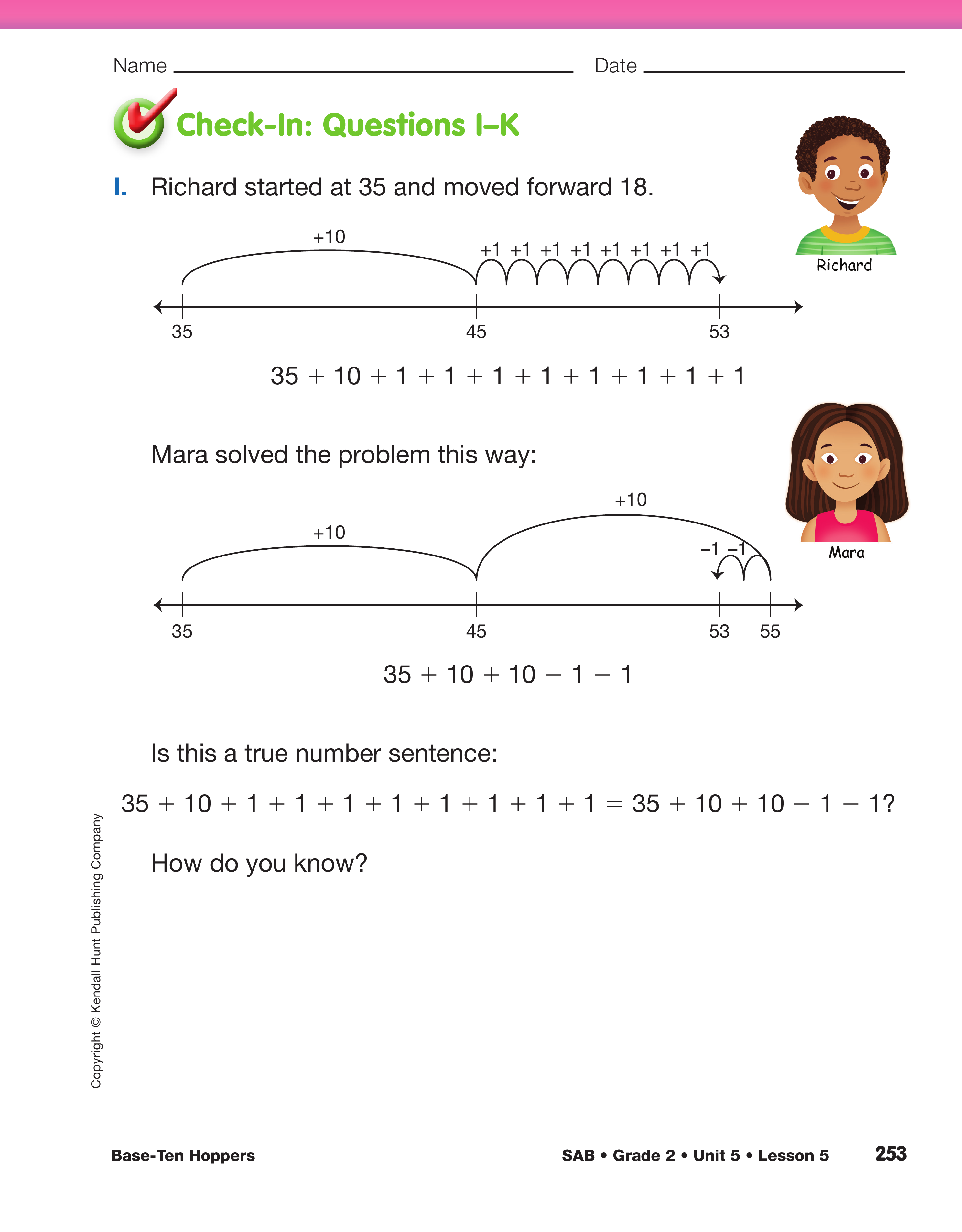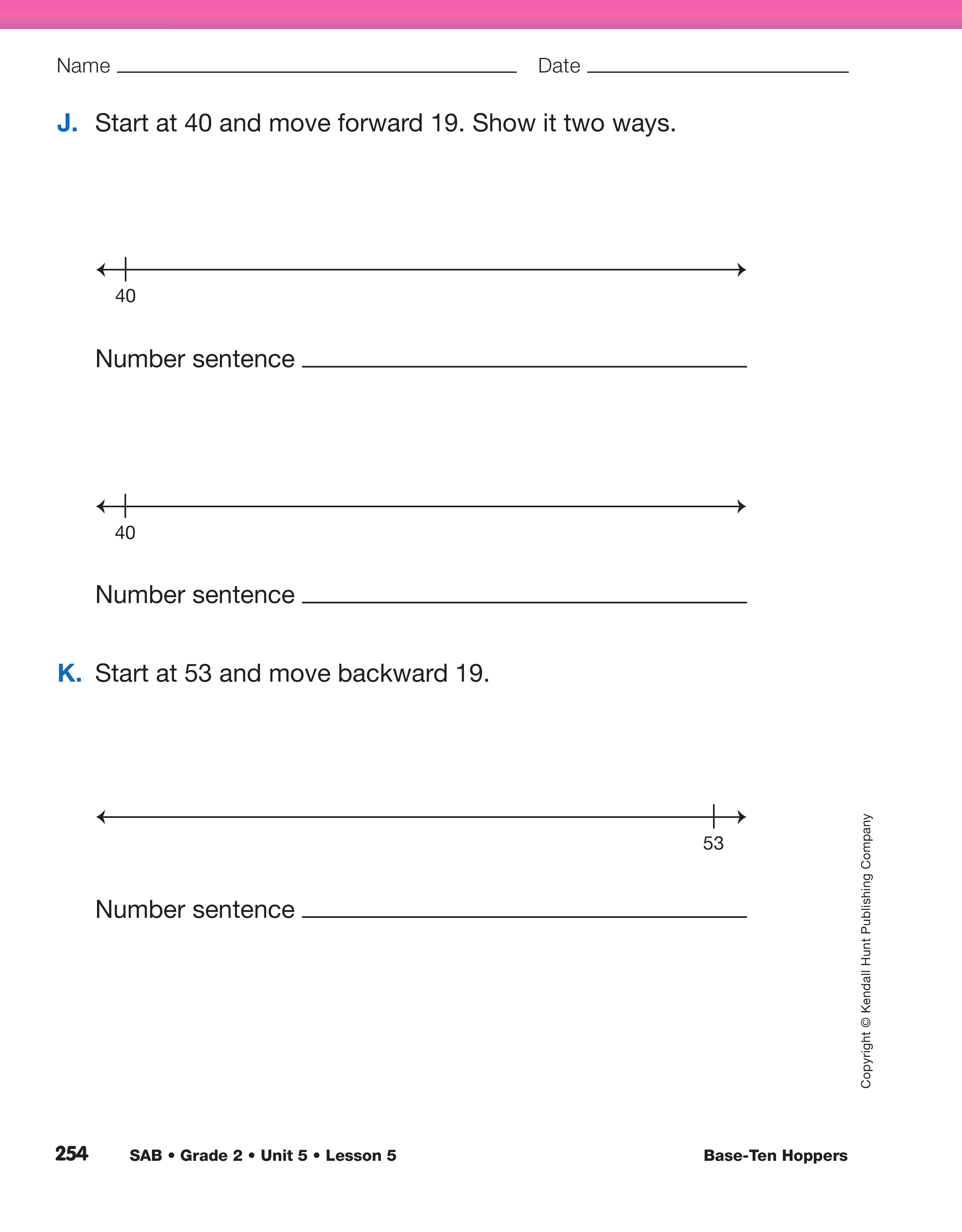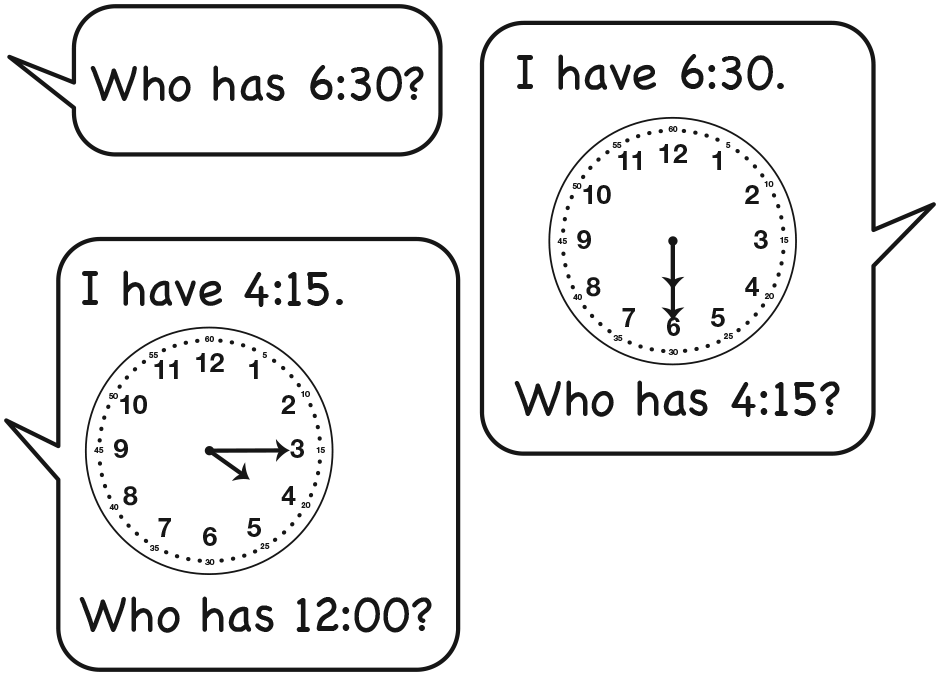After students have completed Questions E–H on
the Base-Ten Hoppers page, display the Open Number Lines Master and pose three more questions.
Remind students that a base-ten hopper can
start anywhere on a number line. For the first
question, ask students to use their desk number lines
to show the hops. Ask volunteers to write the
different combinations of hops and number sentences
on the display.
- The base-ten hopper is on 52. He wants to move
forward 23. What are different ways the hopper
can add 23? (Possible response: two big hops of
10 and 3 little hops of 1)
- What is a number sentence to show its moves? (52 + 10 + 10 + 1 + 1 + 1 = 75)
- Who can show another way? (Possible response:
The hopper could start at 52 and take 3 hops of
one to 55 and then two big hops of 10 to 75.)
Now display and direct students' attention to the 200
Chart in the Student Activity Book Reference section.
- The base-ten hopper is on 108 and moves forward 22. Show its moves on the class number line.
Where does it land? (Start at 108 and take two ten
hops forward to 128 and then two hops of one to 130.)
- What moves can you make on the 200 Chart? (Start at 108 and move to the next row two times
to 128 and count on 2 to 130.)
- Why did you move to the next row? (It is like skip
counting by tens.)
- How are the moves on the number line alike or different
from the moves on the 200 Chart? (Possible
responses: You skip count by ten on both. You
land on 130 on both. It is different because on the
number line, you go in a straight line and on the
200 Chart, you go down the rows.)
- Show how to start at 105 and move forward 19 on
the class number line. (Possible response: Start at
105 and take 2 ten hops to 125. Then hop backward
1 to 124.)
- Now, show how to start at 105 and move forward
19 on the 200 Chart. (Possible response: Start on
105 and move down two rows to 125. Move back
one to 124.)
- Who can show a different way to move on the
number line? (Possible response: Start at 105 and
take one hop of 10 to 115. Then take 9 hops of
one: 116, 117, 118, 119, 120, 121, 122, 123, 124.)
Have students complete Check-In: Questions I–K
on the Base-Ten Hoppers pages individually.
Use Check-In: Questions I–K on the Base-Ten Hoppers pages
in the Student Activity Book to assess students' abilities to
decompose numbers using ones and tens [E2]; show
different partitions of numbers using number lines and
number sentences [E3]; make connections between place
value concepts and representations of numbers with number
lines and number sentences [E6]; recognize that different
partitions of a number have the same total [E7]; solve
addition word problems involving two whole numbers using
number lines [E8]; and show work [MPE5].
To provide targeted practice with decomposing numbers and
showing partitions, use prepared copies of the Open Number Lines Master. See Materials Preparation.


















